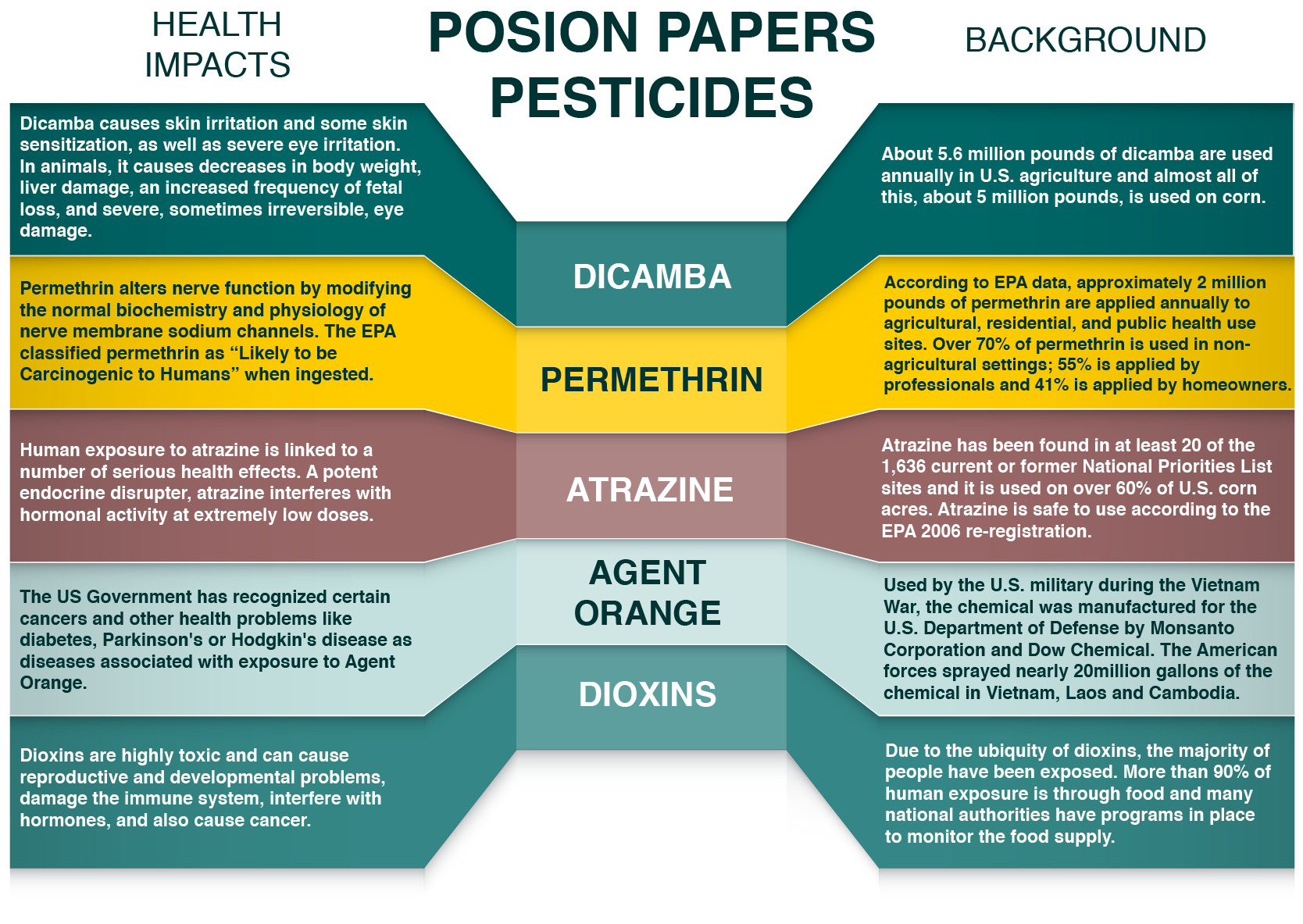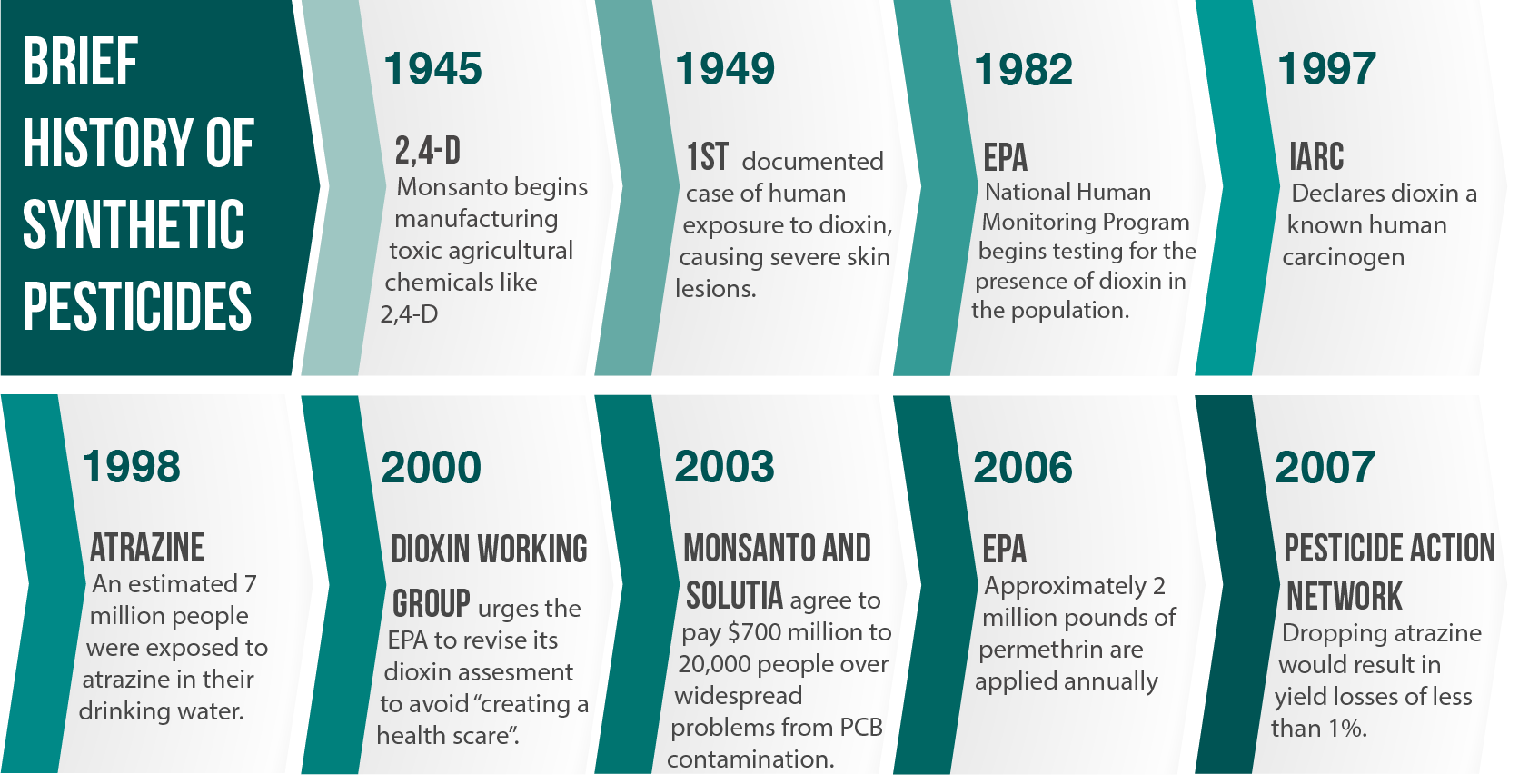“We know that [synthetic] chemicals are present in the food supply and environment at levels in which they are likely to explain cancer epidemics, mental problems, and many other illnesses that we have.”
Jonathan R. Latham, Ph.D., Co-Founder and Executive Director of the Bioscience Resource Project (2017)
.
For nearly a century, some of the most controversial activities deemed standard practice across the agrochemical industry have been kept well beyond public reach. Those days are long gone, as over 20,000 documents from Dow Jones, Monsanto, DuPont, the Environmental Protection Agency, the Food and Drug Administration and the Department of Defense have been made publicly available.
Compiled by the Center for Media and Democracy and the Bioscience Resource Project, the Poison Papers show that both industry and regulators understood the extraordinary toxicity of many chemical products approved for widespread and commercial use and even worked together to conceal information from the public and the press. Offering a running timeline of fraudulent science and regulatory collusion between chemical companies and the government, these documents include scientific studies as well as study summaries, internal emails, reports, strategy discussions and sworn testimonies. The chemicals most frequently mentioned are among the most toxic and persistent ever manufactured, including synthetic chemicals, herbicides and pesticides such as 2,4-D, Dicamba, Permethrin, Atrazine, Agent Orange, dioxins and PCBs. Except for PCBs, almost every synthetic chemical discussed in these documents is still manufactured and sold.
Source: WHO, EPA, EcoWatch (2017)
One of the main revelations from these documents was the fact that the Environmental Protection Agency held many high-level working groups with industry leaders regarding dioxins, a highly toxic chemical and environmental pollutant released through the manufacturing of synthetic pesticides and other industrial chemicals. Known to damage the immune system as well as cause reproductive and developmental issues in children, dioxins rapidly accumulate in the environment, leaving very few people unexposed. Despite the EPA’s longstanding refusal to regulate these synthetic chemicals, several meetings with industry leaders openly refer to field research proving the chemical’s detrimental impact on human health and the environment.
Rather than attempting to regulate dioxins, the EPA consistently allowed their use on an industrial scale and discussed the fact that restoration efforts would be too expensive and time-consuming. They even suppressed, modified and delayed results of a congressionally mandated National Dioxin Study. This kind of detrimental activity occurred on a massive scale, as revealed during the Industrial Bio-Test (IBT) scandal where more than 800 safety studies performed on 140 industrial chemicals were destroyed or deemed invalid. The Poison Papers shed more light on this controversy, revealing that the EPA colluded with the world’s largest pesticide manufacturers for decades to keep these products on the market for as long as possible, or at least until their reserves have been depleted.
Source: Environmental Working Group (2010), Earthjustice (2011), EPA (2006)
There is a fundamental issue in the chemical industry that is leading to the production and commercial distribution of dangerous and unregulated products for everyday use. This is particularly relevant for synthetic pesticides, which have a dark history of substituting dangerous chemicals for alternatives with just as many, or more, problems. Neonicotinoids, a known cause of colony collapse disorder, are currently replacing organophosphates, which have been proven to cause adverse effects in the neurobehavioral development of children (even at very low levels of exposure). Organophosphates themselves replaced DDT, a commercial pesticide known for its carcinogenic properties. Even DDT was once thought of as a safe alternative, which is not surprising when you consider the fact that arsenic was one of the first synthetic pesticides used in commercial agriculture.
The release of the Poison Papers will be fundamental in strengthening public awareness of an industry mired with secrecy. While we have only breached the surface of what these documents contain, there is already enough to catalyze demand for reforming state-governed regulations so that we better protect human health and the environment. By opting for safe, natural and cost effective solutions in crop care such as neem, we will drive a new green revolution in agriculture that relies on sustainability to strengthen our global food supply.
For more information, be sure to check out the Poison Papers

